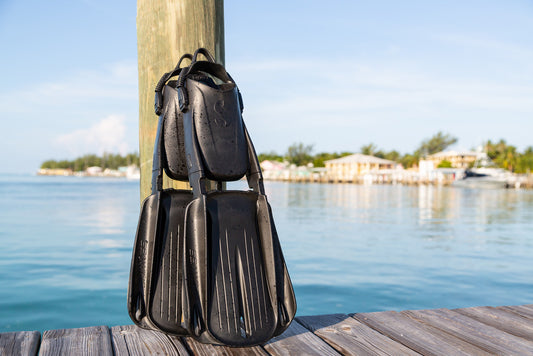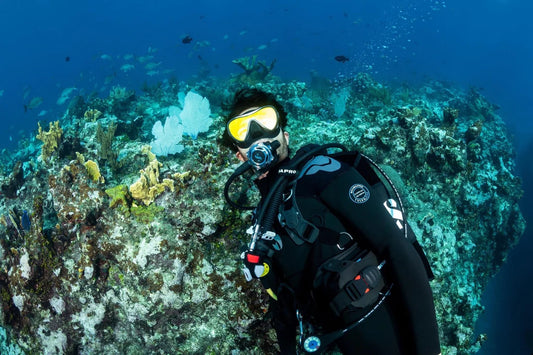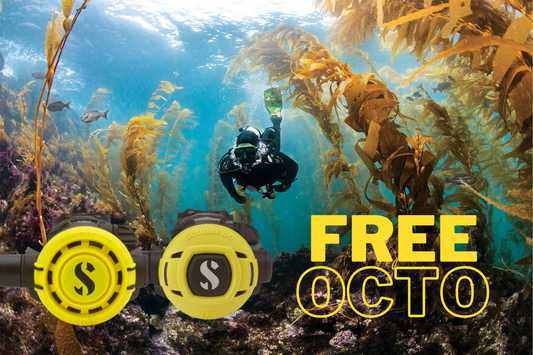
Most of the ocean we dive in is subject to movement in the form of tides and currents. Even in places where there is no appreciable tidal flow, water can be forced to move around topographical obstacles. Just like air flowing over an aircraft's wing, the water has to speed up to pass over or around such an obstruction and that is why even in places like the Northern Red Sea, usually notable for its easy diving conditions, divers can experience strong currents pushing up over the submerged tongue of a reef in some places.
In many parts of the world where there are small islands lying in the path of gentle ocean currents, the water can speed up alarmingly for an unsuspecting diver and the flow as it squeezes round the islands can be very powerful indeed.
Good examples of this are found in French Polynesia, the Indonesian islands that form a barrier between the mighty Indian Ocean and the lesser seas to their north, the atolls of the Maldives, and anywhere that there are channels that let water flow in and out of a lagoon as the water level changes almost imperceptibly in the ocean beyond. At the same time, the shallow seas around the UK are subject to tidal flow as the water of the Atlantic floods over our continental shelf and back again, causing currents.
What does this mean for divers? Down at depth at the dive site, whether it be a wreck or a natural example of topography - rock or reef - the diver can often shelter from this water movement and enjoy a tranquil time or just simply anchor themselves in place by some method. It's during the ascent that divers can find that they are unknowingly swept along but because everything else in mid-water is being swept along with them, they don't really notice, not until they break the surface and realise how far they have travelled.
Getting separated from the dive boat is among the most hazardous moments of the dive and a lost diver's head makes a tiny sight at the surface, especially if there are any waves. If you don't surface close to your boat, you need to attract attention to where you are so that the boat crew can find you without delay.
The obvious thing to do is to communicate with your boat crew while you are still at depth and before ascending from the dive site. You can do this by inflating a buoy and sending it up at the end of a long line so that it breaks the surface and your boat crew understands that you have started your ascent and can follow it if need be.
Mike's Dive Store has a range of such delayed-deployment surface-marker buoys and suitable reels or spools of line to employ them with. By the way, it is important that you never attach this line to any part of yourself or your equipment when you use it, in case the line snags and the buoy drags you to the surface with it.
How to you inflate the buoy? You can either use air from your octopus rig, pressing its purge valve, or hold the open end of the un-inflated buoy over the upper side of your exhaust-T while you have your head tilted to one side so that you can exhale into it. The advantage of this second method is that provided you can inflate it sufficiently with one lungful of air, your buoyancy doesn't change because that air is either in you or in the buoy. You don't need to fill the buoy with air. The decreasing pressure as it ascends will take care of that. Another method is to use a buoy with an autonomous air supply.
Once you are at the surface there are a few different methods of attracting your cover boat, should it not have seen your buoy. One solution is low-tech and consists of a large flag at the end an extending pole. You otherwise carry it bungee'd to your tank.
There was a time when divers made it a habit to carry emergency flares in a submersible container. These proved less than satisfactory because even if they work, they only are effective for a very short duration.
Another is a (much more expensive) high-tech solution called a Nautilus Lifeline. This uses a submersible marine VHF radio once you are back at the surface to contact your boat, other boats or even international rescue services, depending on which button you press. High-tech solutions depend on battery power and need regular recharging to be reliable. There are other high-tech solutions too. Check what's best for you with the dive shop.
Happy Diving - John Bantin



